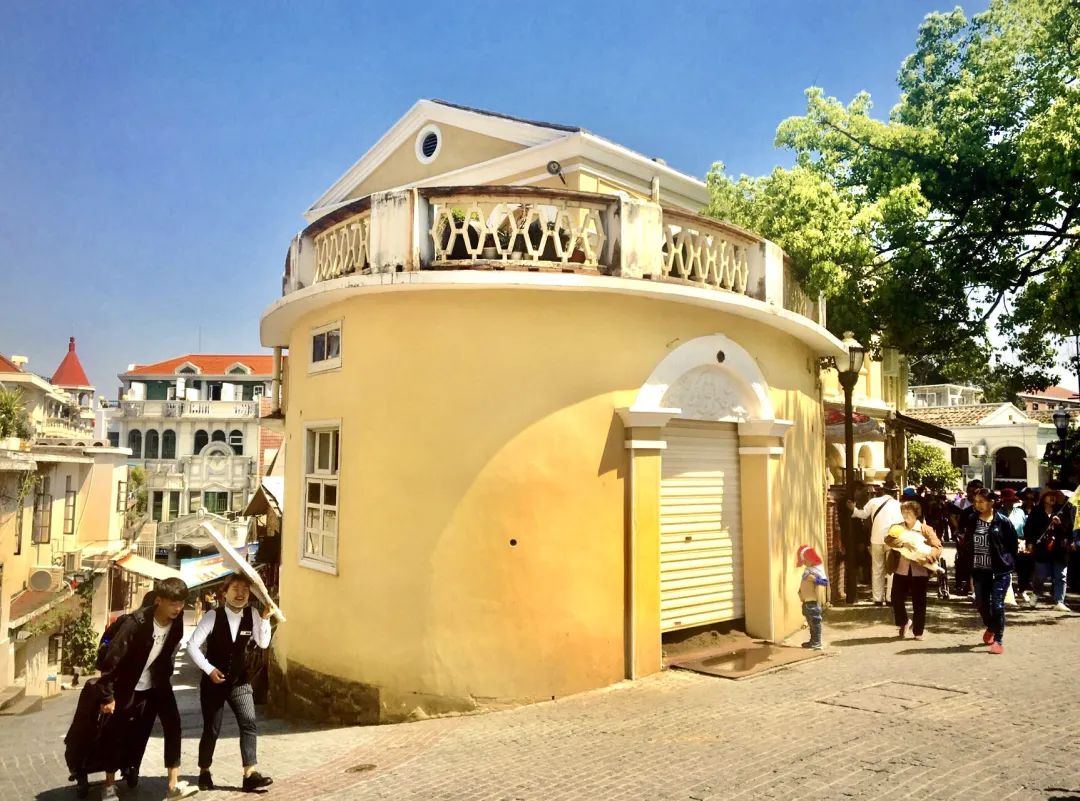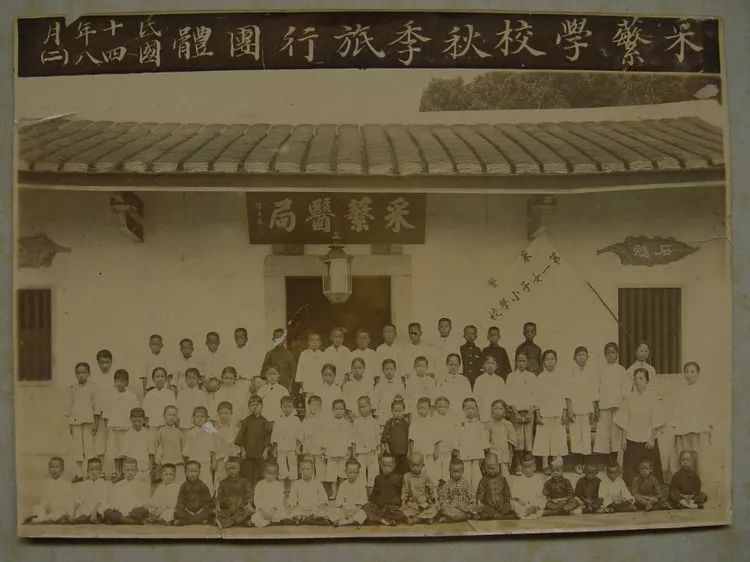
Lin Bingxiang was originally from Humao, Longhai, Fujian Province. In the 1820s, Lin Bingxiang career development has been as hot as fire: its creation of the Hefeng Shipping Company has 29 ocean-going giant ships, unique in Southeast Asia shipping industry and renowned international shipping industry; during the period of its large-scale open mines, run factories, reclamation rubber plantations, the Chamber of Commerce, the construction of the bank, Singapore has become a set of navigation, industry, business, in one of the giant of the Chinese overseas Chinese. About Lin Bingxiang's writings, said it and the same period of Chen Jiageng for comparison, that Lin wins in industry, Chen to patriotic reputation. Lin Bingxiang patriotism love mulberry, in Shiyi, Zhangzhou, Xiamen and other places to build the electric light company, Shaoxing flower carving wine factory, textile factories, sugar mills, etc. have become a pioneer of modern industry in southern Fujian; in the investment in the creation of the island of HuMao covering the nine CaiArtemisia elementary school, a commercial secondary school and CaiArtemisia medical bureau, highlighting the poverty alleviation and dedication to education; in his hometown to build parks, road repair, relocation of toilets, civilized weddings and funerals simple, early touch of transplantation of outside civilization, and the Chinese community. He also built parks in his hometown, built roads, relocated toilets, and advocated civilized weddings and simple funerals. Lin Bingxiang is a pioneer in advocating "going global".
Zhangzhou City Record: Lin He Ban (1841-1914), also known as Cai Artemisia, was a native of Humaozhou, Longxi County, Fujian Province (present-day Zi Nai Township, Longhai County). His father, Lin Chunzhi, was a fisherman and farmer, and his family of five lived in poverty. In the sixth year of Xianfeng (1856), Lin and Ban went to Singapore with 2 yuan from the sale of two fishing nets, and worked as an odd-job man in a store under the Huang Min Shipping Company. He was soon promoted to chief shopkeeper and was responsible for managing the food. He was smart and capable, but also honest and reliable, Huang Min respect, and gradually promoted to the point of goods, bookkeeping, management cabinet, and was recruited as a son-in-law, as the manager of the Harbor Dockyard Company. Huang Min Shipping Company in Lin and Ban's careful management, expanding the import and export trade between Singapore and Southeast Asia, the cause of more development, Lin and Ban enthusiastic sponsorship of social welfare, the local government hired as a Chinese advisory committee, the British colonial government of Singapore in recognition of his achievements in the development of the shipping industry, sealed him as the Taiping Bureau of the Squire, but also a pier named in his name as "and the A pier was also named "Wo Sak Kei" after him.
The development of the Lin family and the passing down of stories and anecdotes from one generation to the next have given rise to a number of popular folktales. On Humao Island, you can always meet an enthusiastic islander who will tell you a few stories in a lively and entertaining manner.
Lin Bingxiang, born in the twelfth year of the Qing dynasty (1873), the son of Lin and Ban. According to "Zhangzhou ten belonging to the travel star fellow townsmen record" records: "Jun young negative wizards, rich construction of perseverance, young read history, study literature, after the South, into the St. Ruth school to study English, and then learn both Chinese and Western, the weak crown, served as the Feng Yuan Shipping Bureau. Management of twenty-nine ships, scheduling appropriate."
Thirty years of Guangxu (1904), Lin Bingxiang and his younger brother Lin Bingmao co-organized the Hefeng Shipping Company, which initially had only three ships. In order to familiarize himself with the port business, growth of insight and talent, he returned many times to Xiamen, Fuzhou, Shanghai and other places to visit, but also to Japan, Britain, the United States and other countries to study. "Strong age all over the motherland sights, around the Japanese landscape, everywhere to study business, broaden their knowledge, by for the stone of other mountains." Xuantong three years (1911), and the abundant ship company into and the abundant ship limited company, increased capital 5 million yuan, "when the heyday, regular Sichuan line in the South China line, there are Fengmao, FengSheng, FengDa, FengPing, FengXiang, FengQing, etc., are thousands of tons of huge ship", has the displacement of more than 1,000 tons of ocean-going ships 8, including the FengQing The company has 8 ocean liners with a displacement of over 1,000 tons, including the Fengqing, which has a displacement of 5,284 tons. The company also has more than 20 small ships, Chuan line in the Dutch East Indies (Indonesia) and British Malaya ports, promoting trade between Singapore and Southeast Asia. In addition to cargo transportation, the company also carried thousands of Chinese immigrants each year to develop various parts of Southeast Asia. During the First World War, Europe's major shipping lines to reduce the transport business in Asia, Lim Beng Siang seized the favorable opportunity to further expand operations, making millions of dollars in profit, became Singapore's "shipping king". To commemorate his contribution to the development of Singapore, the authorities named one of the wharves "Pyeong Cheong Kei".
After the Xinhai Revolution, some overseas Chinese took advantage of the political environment and the outbreak of the First World War, the shortage of ocean liners, freight rates rose, have invested in ocean shipping, the first of which was set up by the Singaporean overseas Chinese Lin Bingxiang, "He Ji Company", sailing in Xiamen to Penang, Malaysia.
In 1904, Lin He Ban and his son Lin Bing Xiang of Huang Min Company invested 5 million yuan to establish He Feng Shipping Co., Ltd. with 20 large, medium and small ships such as Feng Qing, Feng Xiang, Feng Zi, Feng Da, Feng Ming, etc., which not only sailed around Singapore and China's coastal waters, but also were active in the Pacific Ocean and the Indian Ocean, and became a Chinese shipping enterprise with strong capital, which could compete with the West in a wider scope. After the outbreak of the First World War, a large number of European merchant ships were requisitioned for military use, the Chinese shipping company's business suddenly expanded, and made a huge profit. It is estimated that the Hofeng Shipping Company made a profit of several million dollars during the war.
Lin Bingxiang operating shipping industry and development of industry, while actively advocating the establishment of banks, for overseas Chinese industrial and commercial capital turnover services. Wofeng bank by the Nanyang overseas Chinese capital organization, the largest shareholder Lin Bingxiang, Lin Bingmao Kunzhong Department of Singapore's famous capitalists. "Jun hands create a huge industry, there are still and Feng rice factory, and Feng ash factory, and Feng oil factory, and manufacturing soap, and more investment in the rich iron factory, the factory magnificent and unparalleled, dominant for a while, Jun for the expansion of the overseas Chinese economic power, grasp the financial lifeblood of the organization of the bank's initiative, in order to absorb the capital of the tourists, so that the turnover of the overseas Chinese industrial and commercial enterprises." In the first year of the Republic of China (1912), he co-organized the Chinese Commercial Bank with Lin Wenqing and Li Junyuan, and served as the first prime minister of the bank. In the 6th year of R.O.C., he also participated in the planning and founding of Hwa Fung Bank. In R.O.C. 9, the bank's capital was about 6 million dollars and he was the chairman of the board of directors. A few years later, Wofeng Bank's branches had spread to New Zealand, Malaysia, Indonesia, Hong Kong, Xiamen, Shanghai and other places, and became the first Chinese-funded bank in Southeast Asia to conduct international business. In the 8th year of the Republic of China, it also founded the Overseas Chinese Bank and set up branches in Penang, Kuala Lumpur, Malacca, Yangon and Xiamen, which played a great role in serving the overseas Chinese and promoting the development of industry and commerce in Southeast Asia. As his business prospered, Lim Beng Cheong became a powerful Chinese magnate, and in his heyday, he was the richest man on Sing Tao, and in 1916, he was elected as the President of the Singapore Chinese Chamber of Commerce and Industry (SCCCI).
"The prestige of the Chinese and foreign Chin-chi, the village looks up to the virtue of the ordinary public welfare, for the good tirelessly, love of countryside and patriotism, out of nature." Lin Bingxiang at home and abroad in the eyes of the public reputation, not only from his wealth, but also because he was enthusiastic about public welfare, to the local government, its contribution is also Yin. Guangxu 29 years (1903), "donated 60,000 yuan to help Raffles College for the expansion of the needs. The first outbreak of the European war, in addition to encouraging compatriots to lose money and contribute their efforts, but also with Li Junyuan to buy an airplane, presented to the United Kingdom, contributing to the victory of the overseas Chinese charitable organizations and cultural and educational institutions of the heel of the door to the recruiter", for this reason, the British Government awarded him the title of "Taiping Bureau of the Squire".
The Lin Bingxiang Residence and Ancestral Alter in Hu Mao Xizhou Village are two large alters with the traditional architectural style of southern Fujian. In 1914, Lin Bingxiang's father, Lin He Ban, used thirteen large ships to carry silver from Singapore, and built a cofferdam at the outflow of the Jiulong River.In 1914, Lin Bingxiang, who had a successful career, founded the Xiangmao School in his hometown of Hulmao, which was one of the early schools run by overseas Chinese in Southern Fujian Province.In 1915, Xiangmao School was renamed as Caijia School in honor of his father, Lin Caijia. Since then, Lin Bingxiang and his brother Lin Bingmao successively founded 9 Cai Artemisia branch schools in Xizhou, Xiagang, Xinyanggang, Caohong, Jinding, Xunyu, Jibei, Renhe and other villages, the school's operating funds, the salaries of the teaching staff and the students' textbook fees are borne by the Lin brothers, the peak of Cai Artemisia school enrollment of more than 300 students, the school for the local training of a large number of students, many of whom have become the pillars of the domestic and foreign talent. Lin Bingxiang is dedicated to the public welfare, under his leadership and influence, his relatives and children also adhering to the patriotic passion of the ancestors, actively support the local construction of their hometown. In addition to the establishment of schools, but also donated funds to open the "Cai Artemisia Medical Bureau", voluntary medical treatment for the local poor people, Lin's family also invested in their hometown factories and enterprises, services to the townspeople. Lin Bingxiang's righteousness was honored by the government at the time and is still celebrated today. After more than a century of historical baptism in Longhai, the second largest overseas Chinese township Zi Nai, Lin Bingxiang's name is still a household name. In his hometown of Xizhou village, people are still accustomed to call his former residence "Fanzai building", the village kindergarten, elementary school after several changes is still named "Cai Artemisia". In the village center of the village elementary school building hanging a wooden relief plaque for people to look at, for the Republic of China four years the president of the inscription. The plaque is 2.4 meters long and 0.8 meters wide, surrounded by delicate carvings and flowers, with gold characters on a vermilion background in the middle and bright colors. On the plaque, the four block letters of "anxious and righteous" are still shining brightly under the scrubbing of the years and are still well-preserved, which makes people marvelous.




